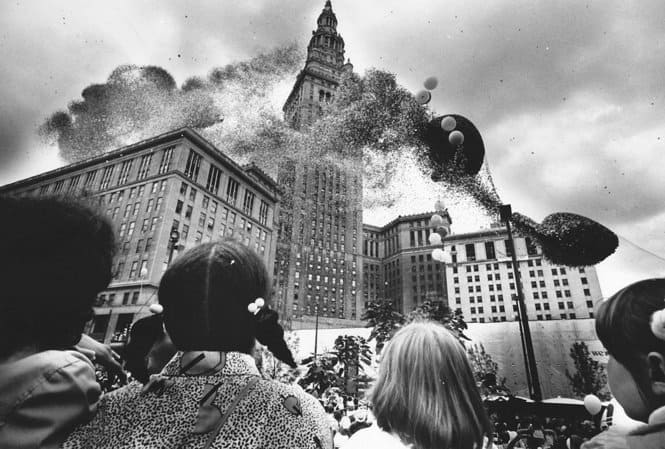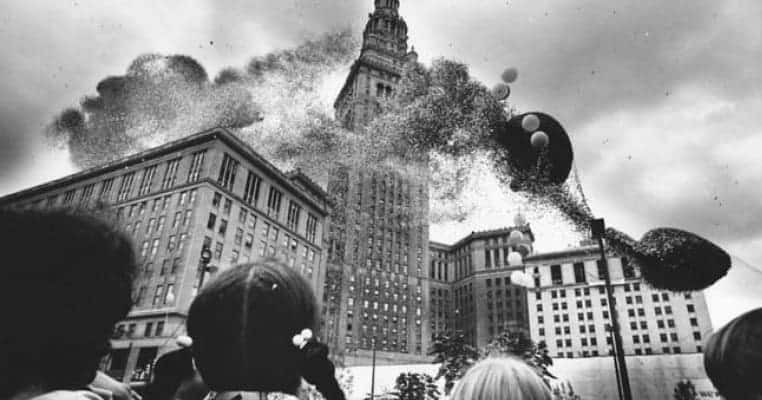Plastic and other forms of contamination are helping to fuel the environmental catastrophe that humans are forcing upon the planet. While pollution is nothing new, only recently have people begun to wake up to its harmful effects. In the 1980s, the charity, United Way, attempted to set a world record and raise money by launching 1.5 million balloons. The result was a harbinger of today’s environmental crisis, as deflated balloons rained down and wreaked havoc on the city of Cleveland and nearby areas. The event was largely forgotten.
When a photo from the event surfaced on a Cleveland Remembers website, a hunt began for what the details of the picture. A user responded by saying, “It was 1986. The United Way of Cleveland wanted to break the world record for a balloon release. I think they released 1.5 million balloons. Except the weather didn’t cooperate, and it started raining right before they let them go. The winds pushed the balloons north, and the rain pushed them down into the water. I vaguely remember it, but recently found a bunch of slides a relative of mine took from the event.” The balloons resulted in several deaths and a sea of pollution on Cleveland and the surrounding area.

Volunteers filled the balloons up with air, then placed them in a white bin for storage. All of the different colors of the balloons made the container look like a multi-colored dome. Just before 2 pm on September 27, 1986, United Way released 1.5 million balloons in a public spectacle. The balloons mushroomed up around Terminal Tower on their way up to the heavens. What the engineers of the event had not anticipated is what would happen when the balloons proved the law of gravity right and, after going up, would come back down.

United Way Worldwide is an international non-profit organization that seeks to improve life for people by addressing community issues, particularly in healthcare, education, and jobs and income. Many of the programs that United Way initiates are intended to benefit children and youth. Though based in Alexandria, Virginia, United Way operates through local chapters in different cities across the country and in some international locations. Employees and volunteers target specific issues in their own communities and help address them by advocating for public policy and partnering with other organizations, such as schools and local businesses.
Balloonfest was a fundraising effort to help finance programs by United Way of Cleveland, Ohio. Over 2500 people had volunteered to help make the event a success. In addition to helping raise money for community service projects, the purpose of the launch was to set a world record for the most balloons released at a time and help put Cleveland on the map, thereby contributing to lift it out of urban decay. Indeed, the event did put Cleveland on the map, though it was soon forgotten. It also landed the United Way of Cleveland in the 1988 Guinness Book of World Records.

